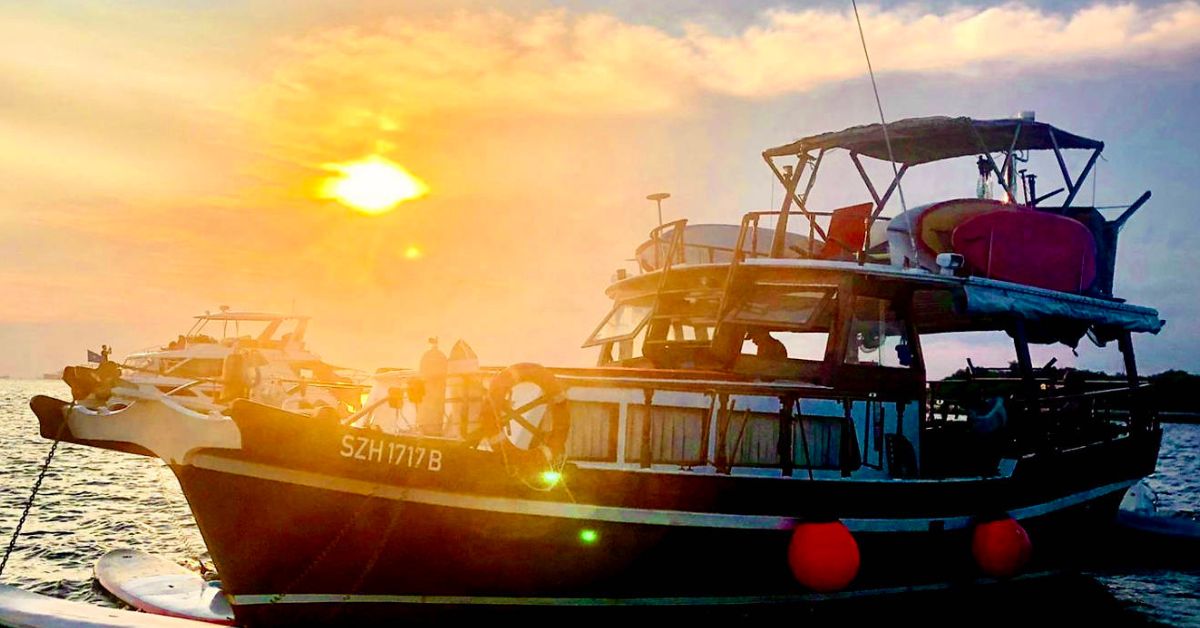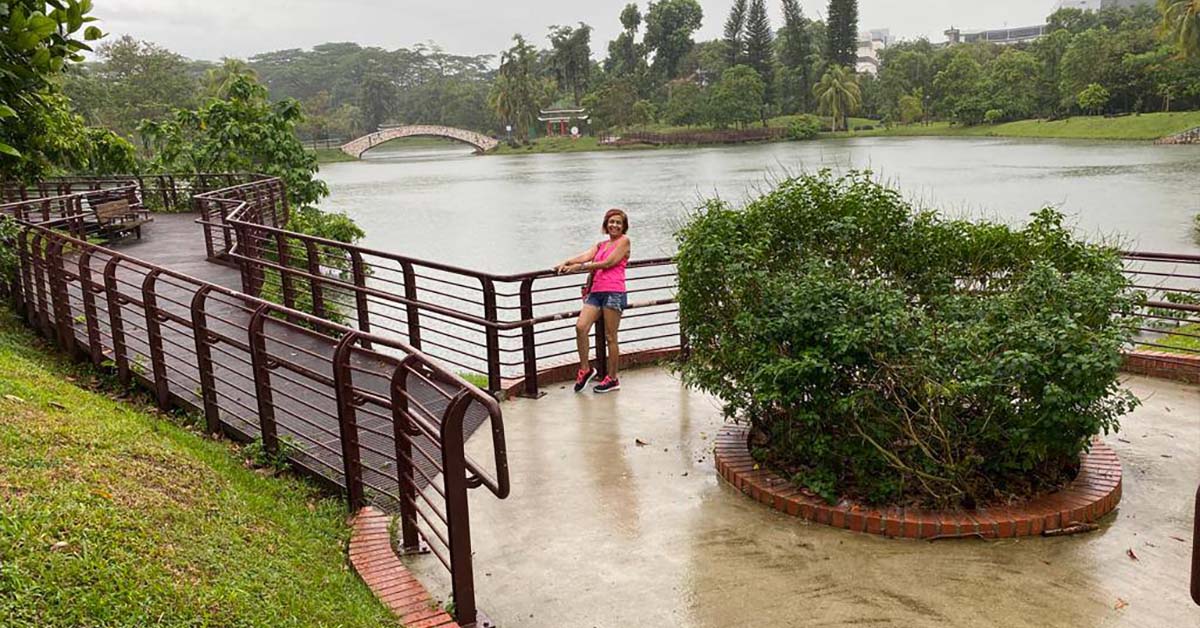
Credit: Jeffrey Yang
Summary:
- Rainforest Wild Asia offers both an accessible elevated boardwalk and more demanding forest treks, giving visitors a choice between a comfortable scenic walk and adventurous terrain with close-up wildlife encounters.
- The park features multiple themed zones – from karsts and rock cascades to canopy paths and a quiet cavern – each showcasing distinct habitats, animal species, and unique experiences like net crossings and a canopy jump.
- Amenities include frequent ranger talks, varied F&B options, and good value for seniors through discounted park entry and parking packages, making it an attractive outing locale with practical conveniences.
We have heard and read about the newly opened Rainforest Wild Asia located at Mandai Wildlife Reserve and decided to visit it as part of our weekly long walk for exercise.
To our delight, we found that there is a wheelchair- and elderly-friendly elevated timber boardwalk with gentle slopes routing through the entire park, and shelters located at regular intervals.

From the boardwalk, you can look into different areas housing animals found in the rainforest. Because of its height, it can be a challenge to spot the animals, but which also makes it fun when we finally see them.
But the real attraction and beauty of Rainforest Wild Asia are the forest treks that are meant for the more active and adventurous.
The treks take you through the rainforest, and come complete with log crossings, rock crossings over streams, crossings over the karsts, and more.
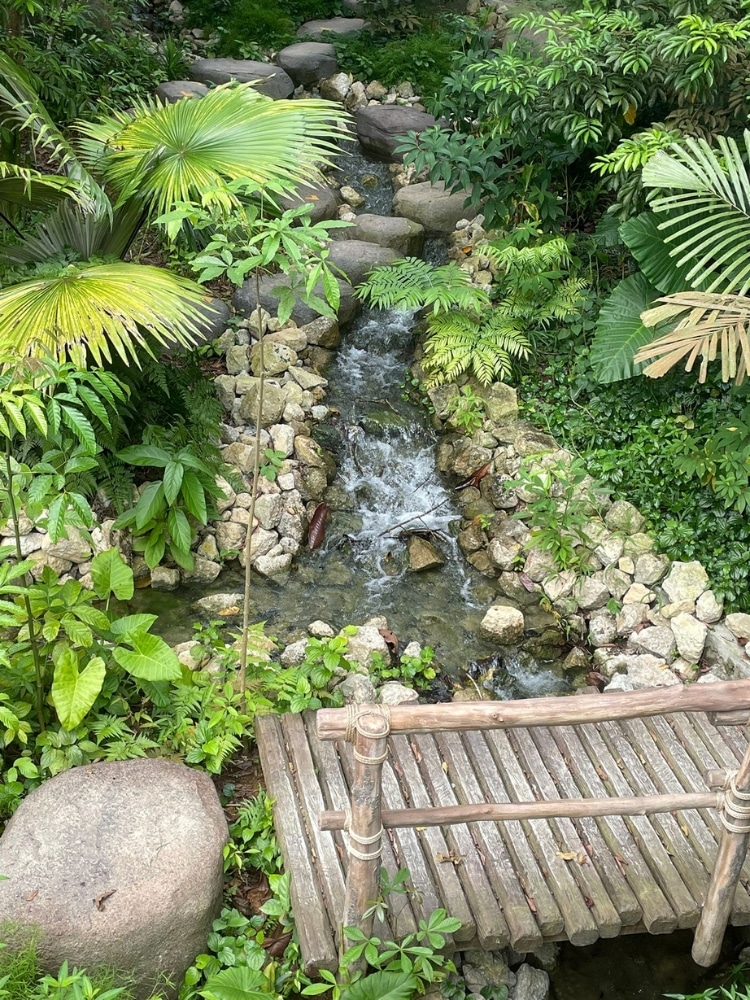
The treks also brings you up close and personal with the animals. Expect to have your shoes dirtied, and to be panting and sweating, albeit with excitement.
My inner, more adventurous self went there for the treks, and was studying the map when a helpful ranger noticed my limp and walking stick and said, “Uncle, it is easier and safer if you took the boardwalk.” I responded with a sigh.
Advertisement
Locations within Rainforest Wild Asia
The first station was The Karsts, beautiful limestone formations with high sharp spires. It looks very much like the Pinnacles at Mulu National Park in Sarawak. There is a trek through the karsts, and there is also a high element rope course with extra charges for participating.
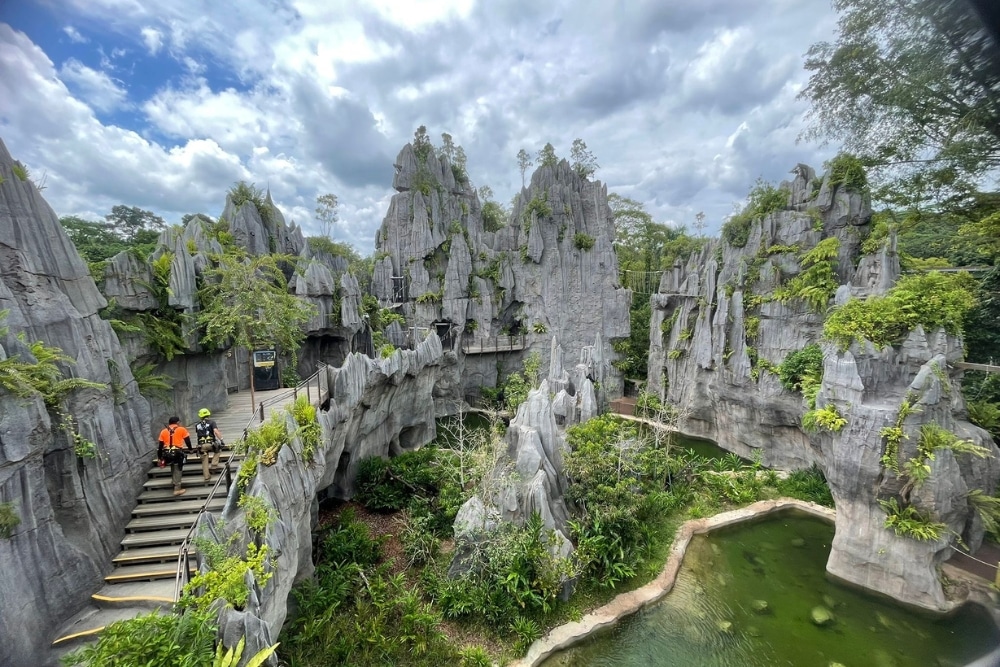
What was interesting was that it was occupied by Francois langurs, a type of monkey which seeks safety from predators by living among the karsts. Their favourite perch is right at the top of the sharp spires.
The boardwalk then led us to the Forest Floor to see the animals that live at the bottom of the rainforest. We saw a mousedeer, and a tiger as well when we ventured further in.
We arrived at the Rock Cascade next. It was another spectacular area with high rock walls, waterfalls, a stream, and Malayan tigers roaming around the forested area beside it.
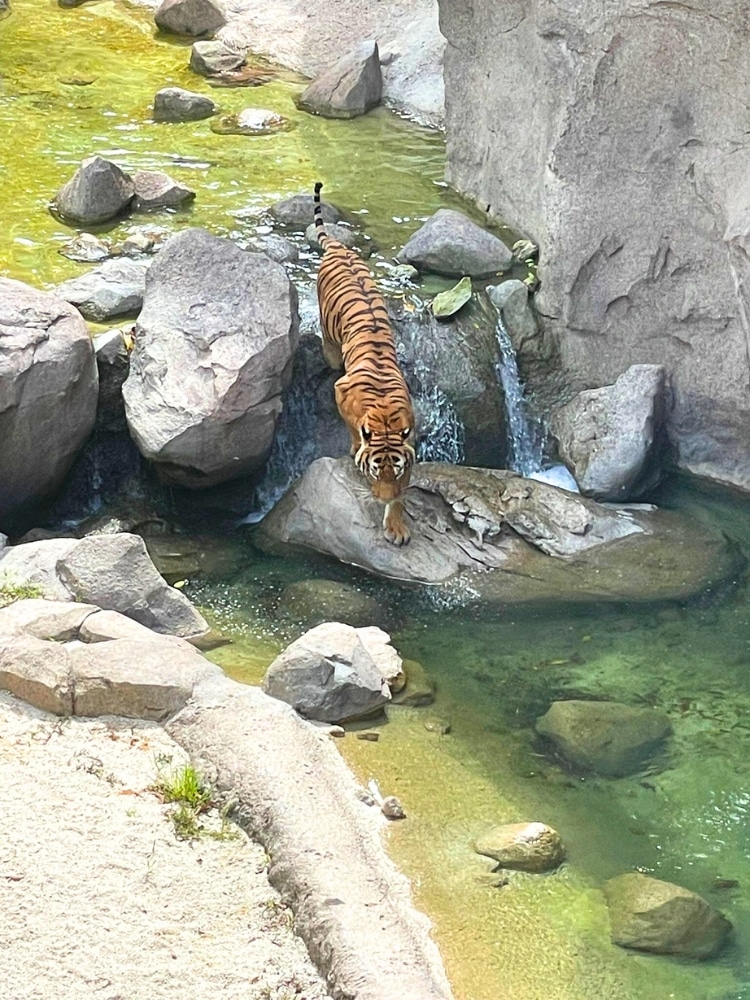
We were told by the ranger that food for the tigers were placed at different spots each day to make the tiger hunt and look for its food as a kind of mental stimulation for the tigers.
Then there’s the Canopy, home to the Javan langur and the Red Shanked Douc langur. The latter looks very well dressed, as though it’s wearing pants and a hoodie jacket.

This area also has two variants of net crossings that’s accessible for free, as well as a Canopy Jump which has to be paid for. The jump is 20 metres high and lets you free fall for half the height, before it slows down and gently lands you on the ground below.
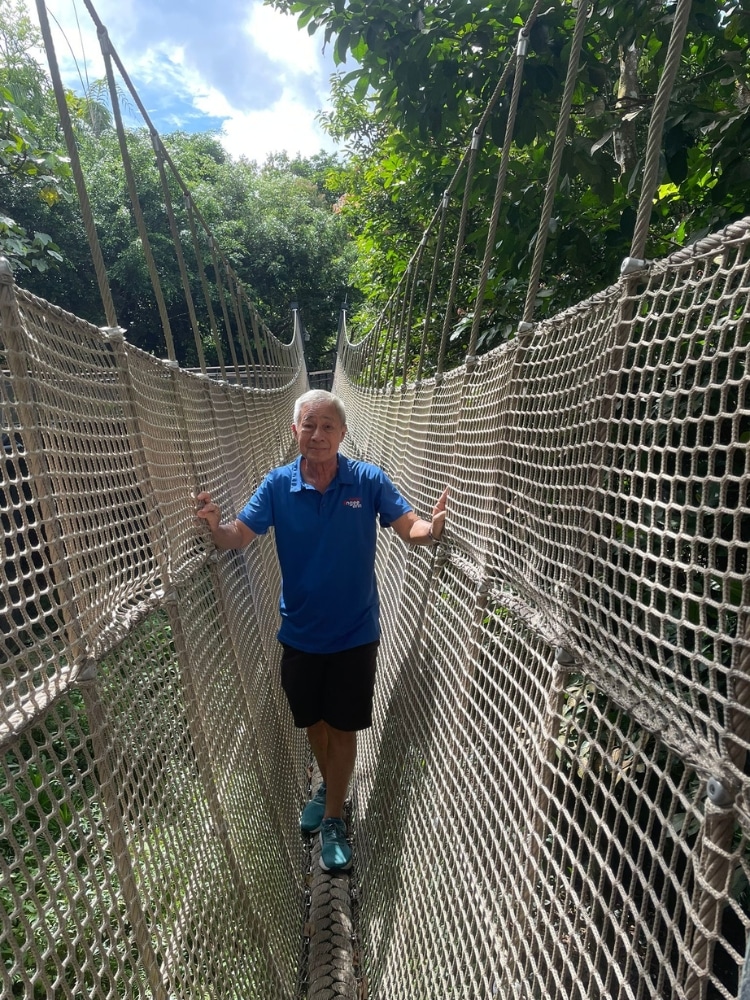
Next was the Watering Hole, which as you can imagine from its name, is an area which mimics where animals in the rainforest would go to for a drink. There are a few more animals to check out here, including crocodiles, tapirs, babirusas (a type of swine), and red dholes (a type of canine).
The last station is The Cavern, which is the climax of Rainforest Wild Asia. Why? Because it is airconditioned! But in all seriousness, it is beautiful. It is modelled after the Mulu Caves in Sarawak, where the various rock formations are formed by minerals dissolving over centuries.
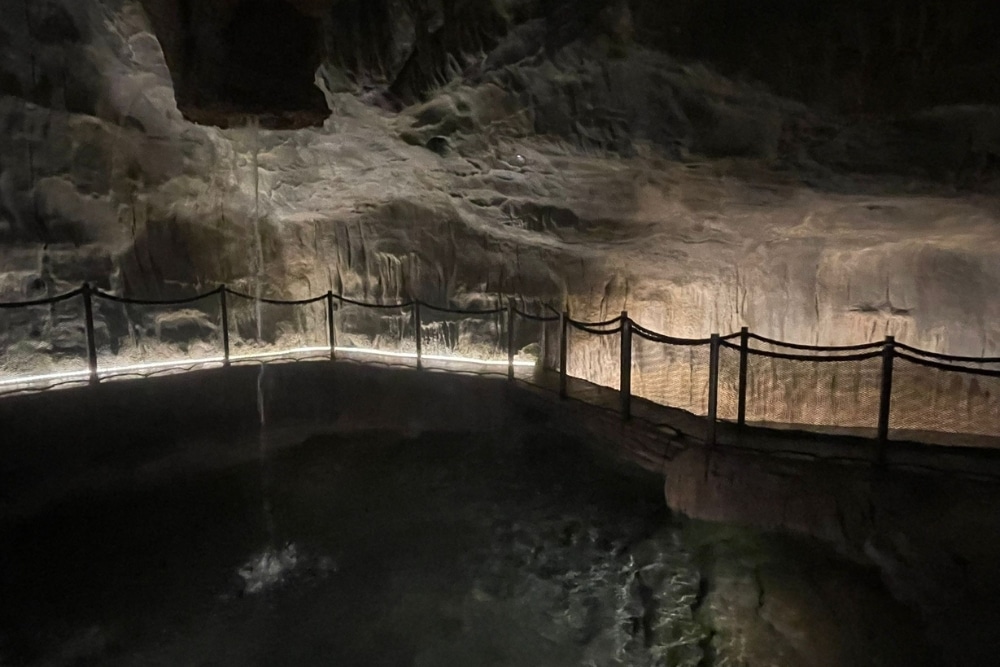
It is designated as a “quiet zone” in order for the sounds of the ground water trickling down to be heard. However, during our visit, people were still talking loudly to each other or into their mobile devices.
Near the end of the cavern is the Oculus. It is where the cave opens up at the top, looking like an eye peering into the sky. The daylight shines in like a spotlight, and people tend to stand at the bottom of it for the perfect photo op.
We asked someone to take a photo for us. However, he zoomed in on our faces without including the Oculus in the snap. A professional photographer is available there, but it will cost you $60 for the perfect shot. I’d rather draw in the Oculus myself when I frame my photo.

In total, we spent around 3 hours there clocking about 8,000 steps.
Throughout the park, you’ll find rangers giving talks at the various stations at fixed times. The rangers are also always around, and are friendly and available to share more about the attraction with visitors. We learned from them that the animals are usually of one gender to prevent them from multiplying uncontrollably, which might lead to overcrowding.
Also read:
A Kitchen Renovation That Became An Exercise In Gratitude
After decades of living with a patchwork kitchen held together by glue and tape, a broken cabinet door finally pushed writer Kim Lee to undergo a kitchen renovation.
Singapore’s Mahjong Mafia Are The Friends (And Enemies) You’d Want To Keep Close
The mahjong aunties come armed with more rules than Fight Club, but it’s great for intergenerational bonding, says Neil Humphreys.
F&B options, senior discounts, and parking fees
If you’re hungry, Cavern Restaurant, operated by the Tung Lok Group, is your answer. It’s accessible to the public without requiring entry into Rainforest Wild Asia. You can easily locate it by looking out for the signage outside before reaching the park.
There are food and beverage outlets within the park itself, but prices are inflated. A Slurpee costs $9, while a small bottle of beer goes for $12. We opted for a A&W root beer float outside the park for $5.50.
Speaking of which, there are a number of food and beverage outlets right outside Rainforest Wild Asia, which is located near the Bird Paradise, and are collectively sited at Mandai Wildlife West. There is an A&W as mentioned, as well as a Han’s, Collin’s, Copper Chimney, Gelato Boutique, Old Chang Kee, and Starbucks.
Entry to any of the parks (Rainforest Wild Asia, Bird Paradise, Singapore Zoo, River Wonders, and Night Safari) at Mandai costs $20 for senior Singapore citizens, and there is also a SG60 promotion going on now where $60 gets you multiple entries to any of the parks for 1 year.
Carpark charges are $3 for the first hour, $2 for subsequent hours, with a cap of $10 a day. If you buy an annual pass, you pay $30 for unlimited parking for a year. So it’s pretty worth it.
We have visited the Singapore Zoo, River Safari, and now the Rainforest Wild Asia. Only the Night Safari and the Bird Paradise remains for us to check out.
You might also want to consider the Mandai Boardwalk while you’re there. It’s free entry and offers scenic waterfront views to accompany your walk.



